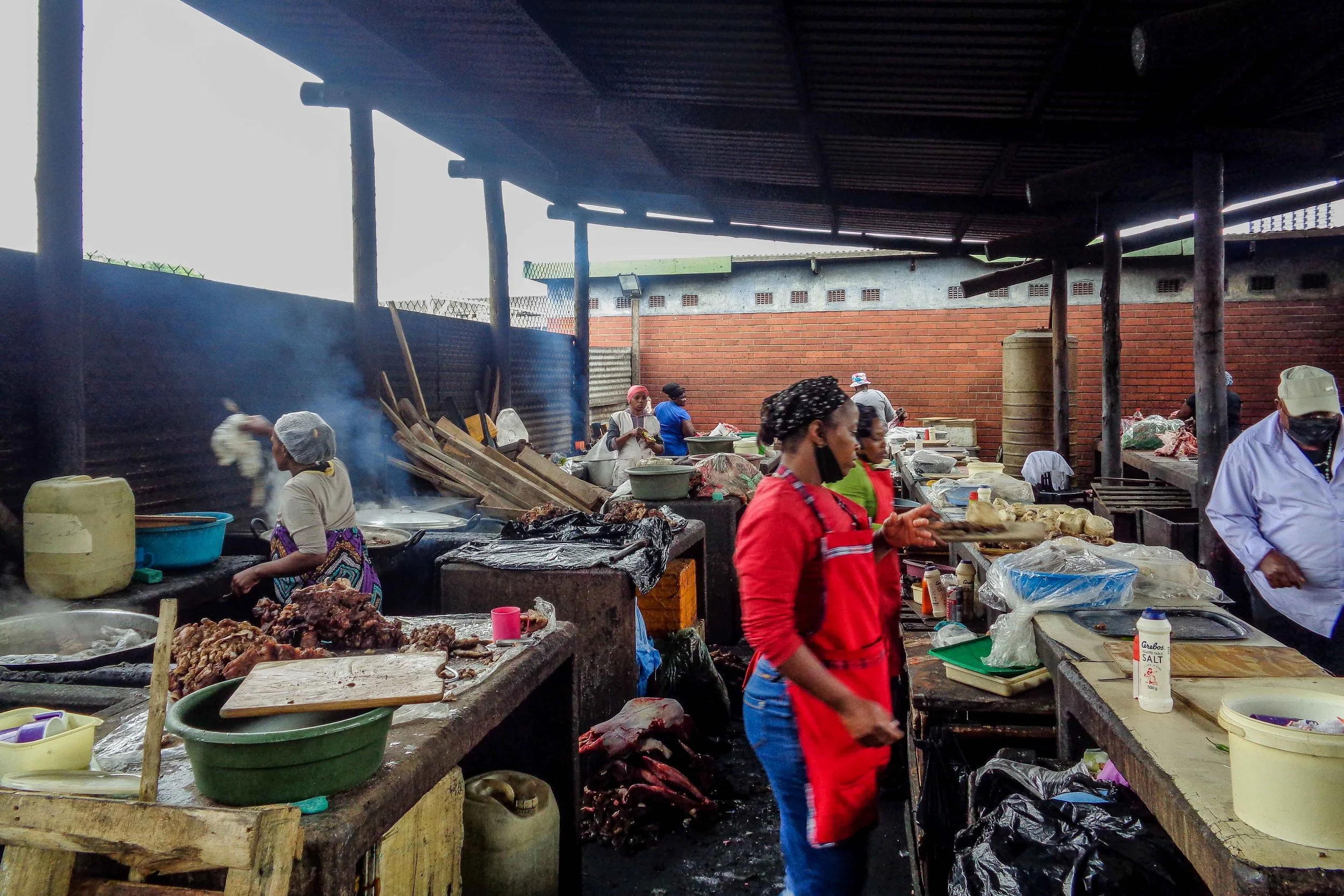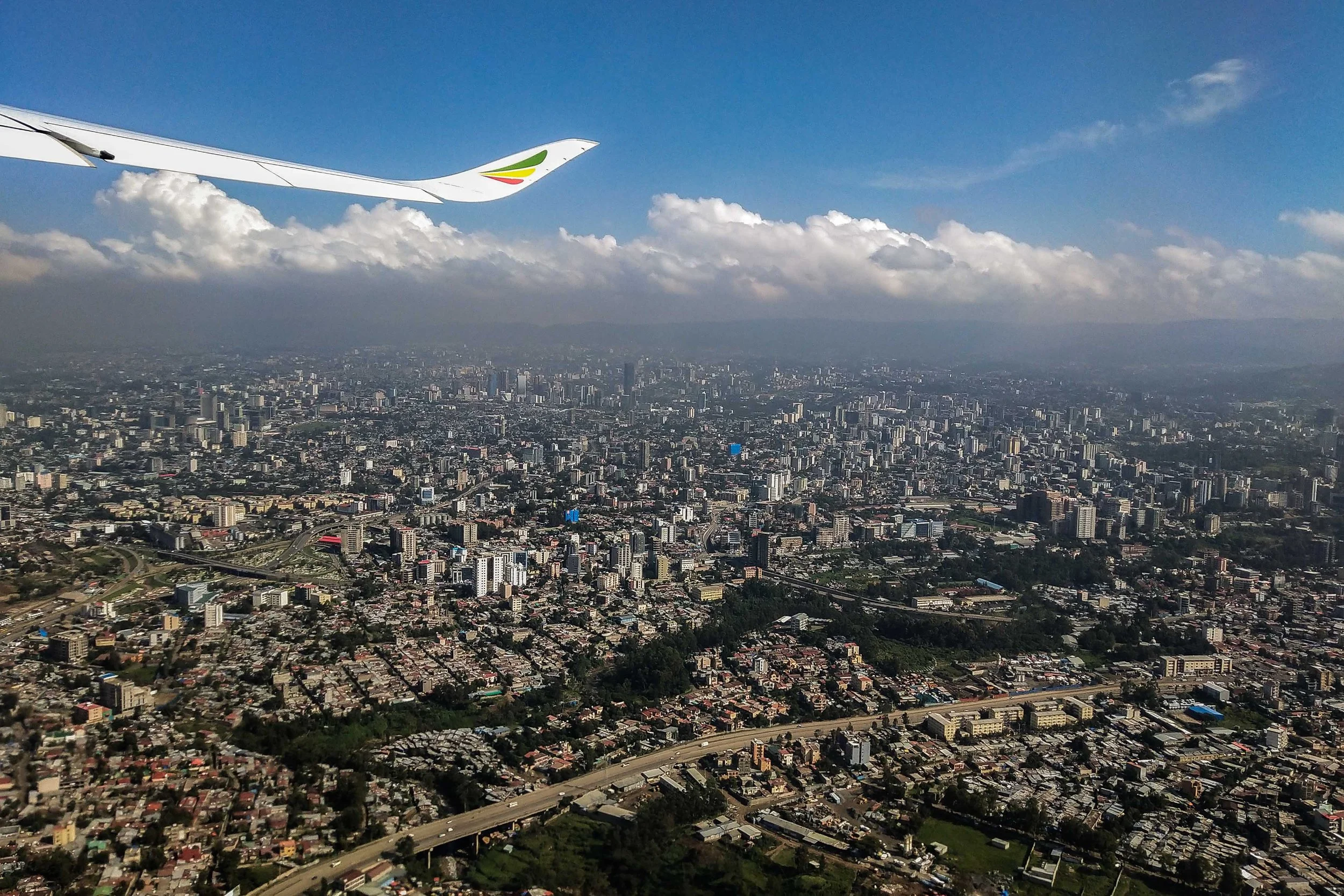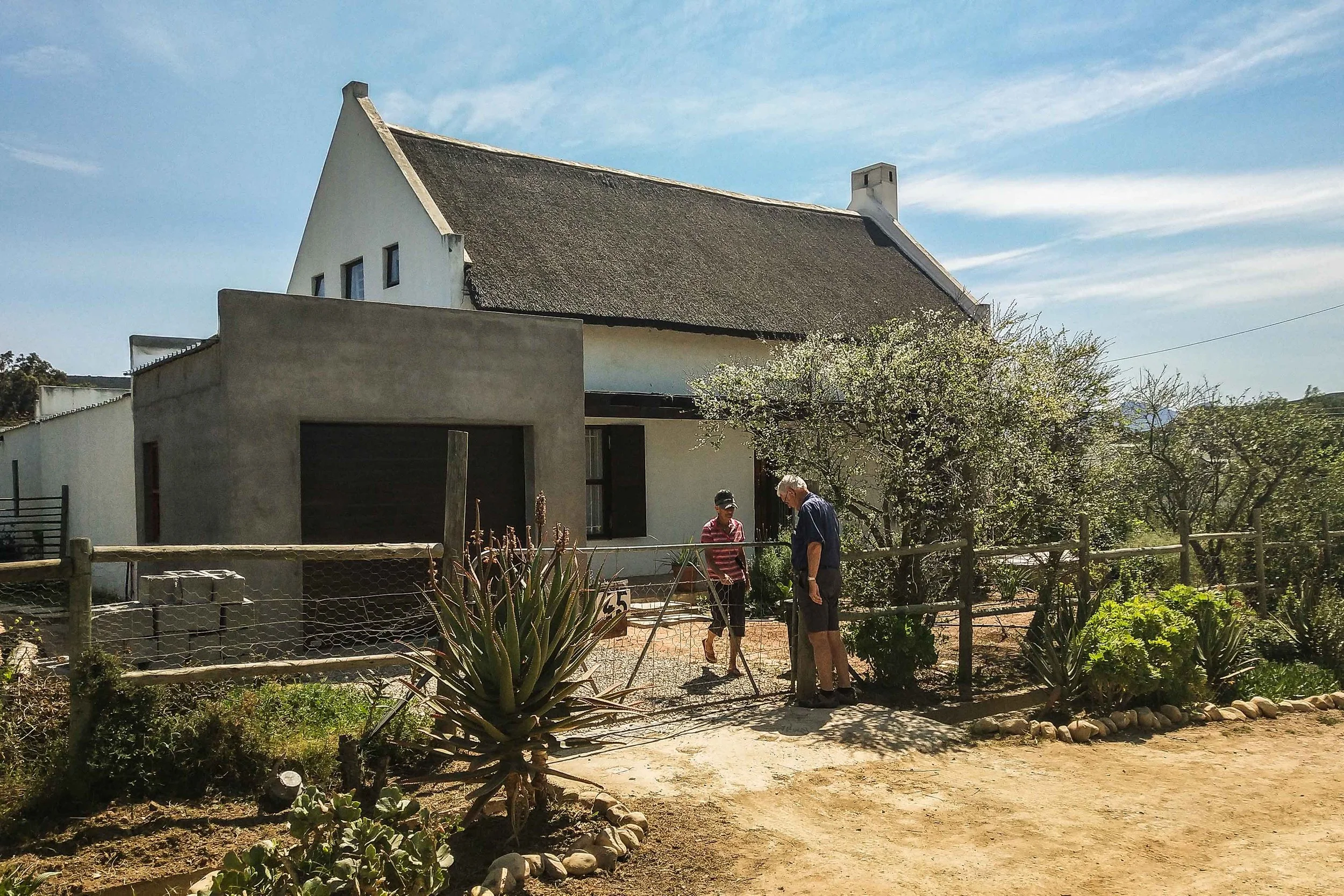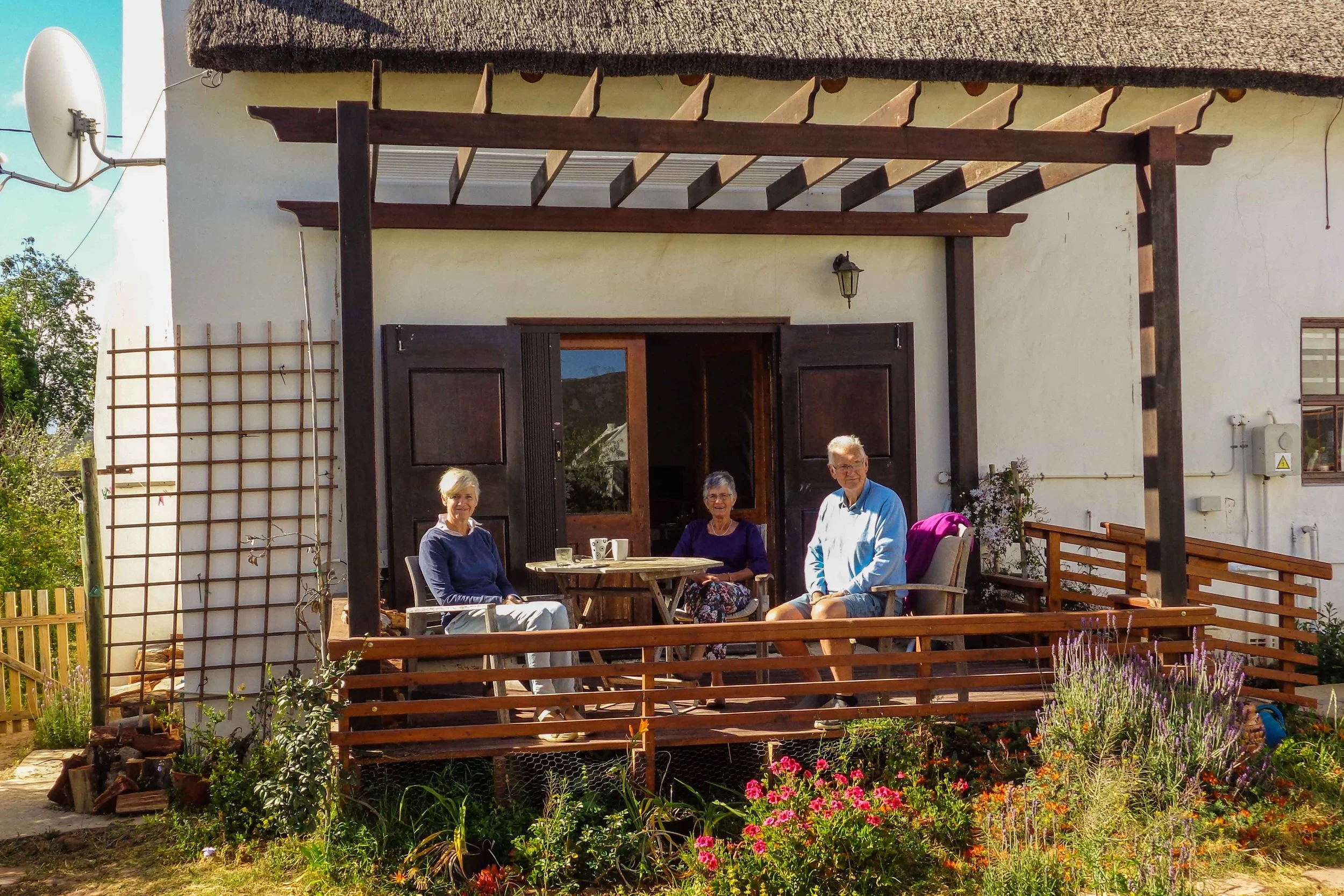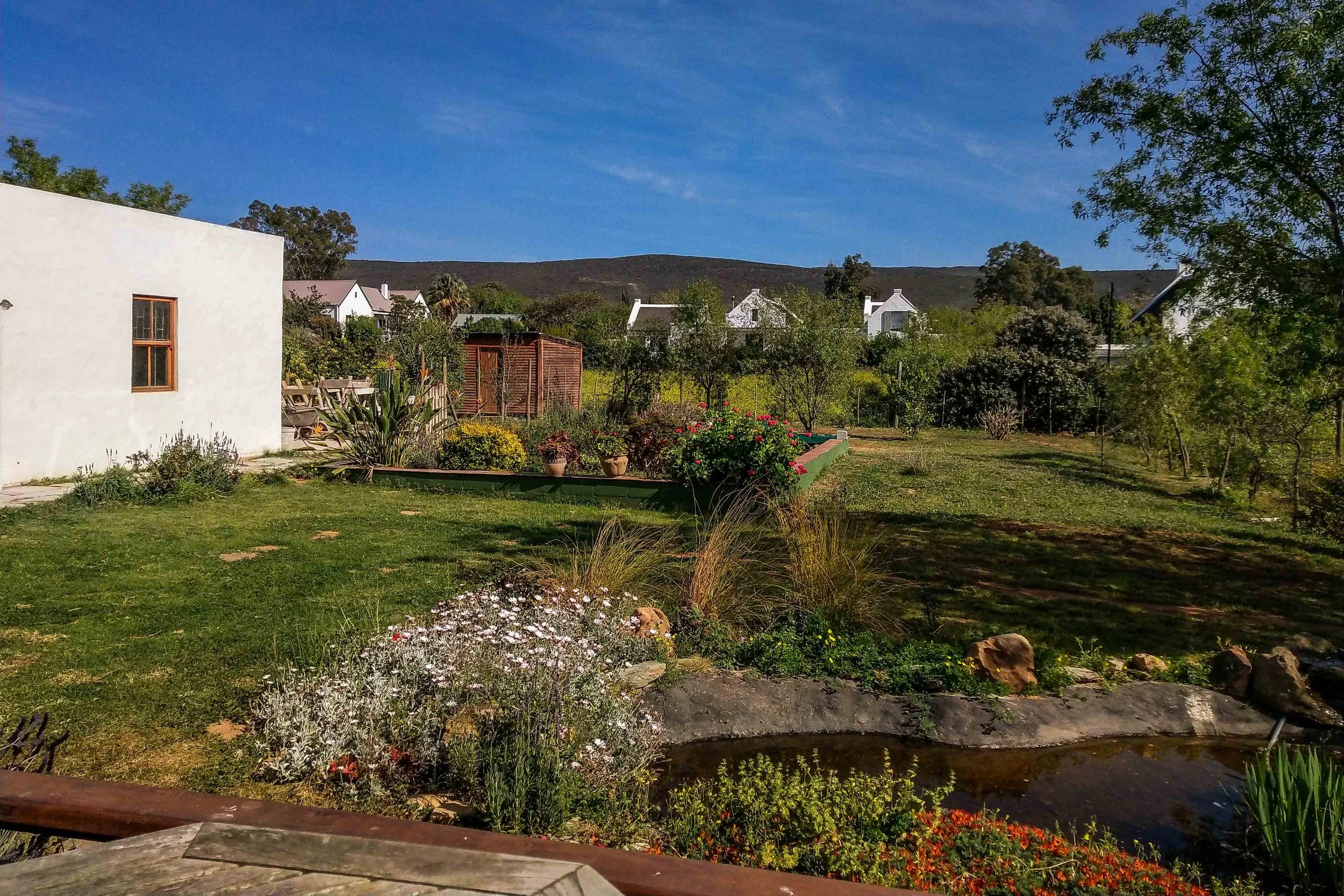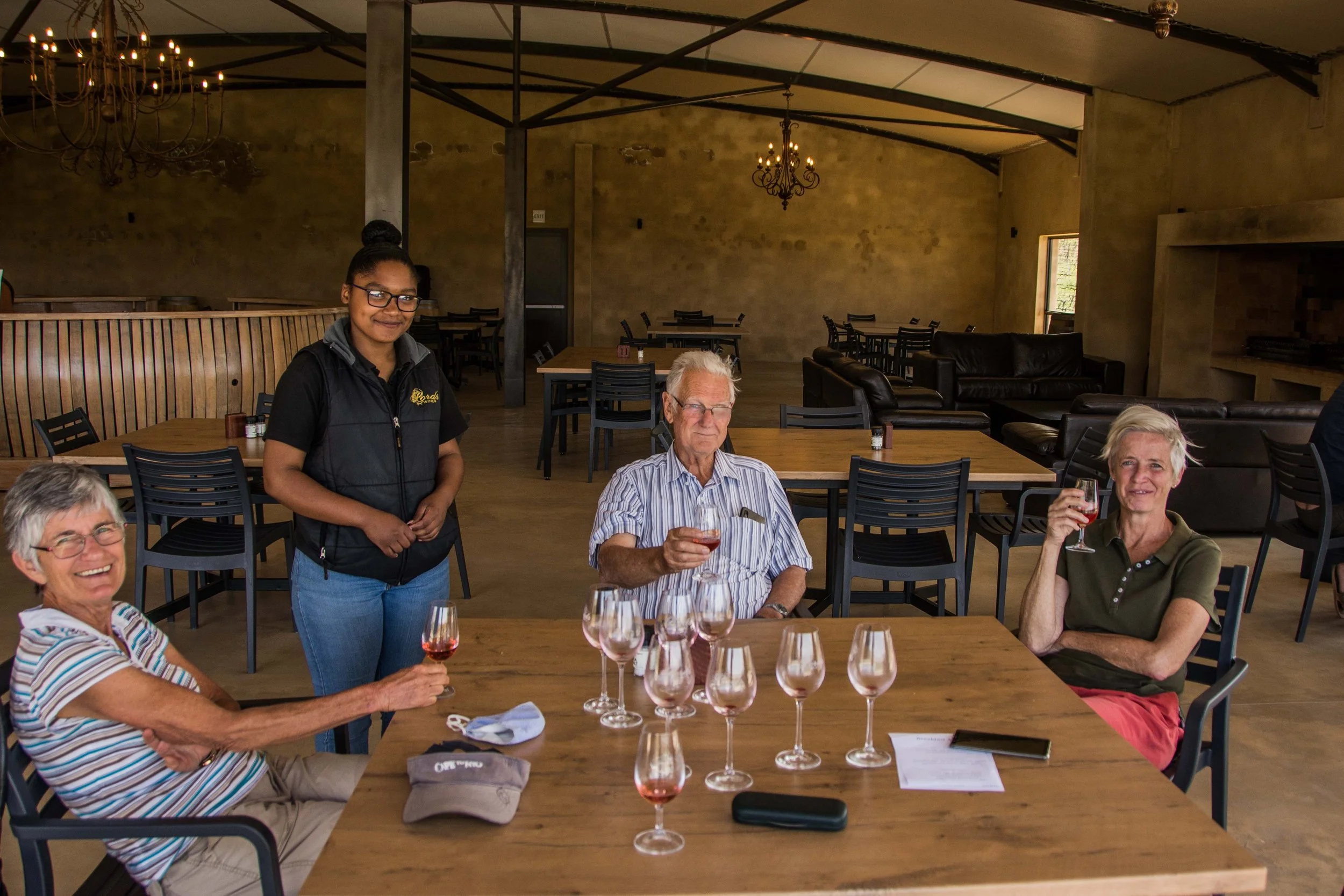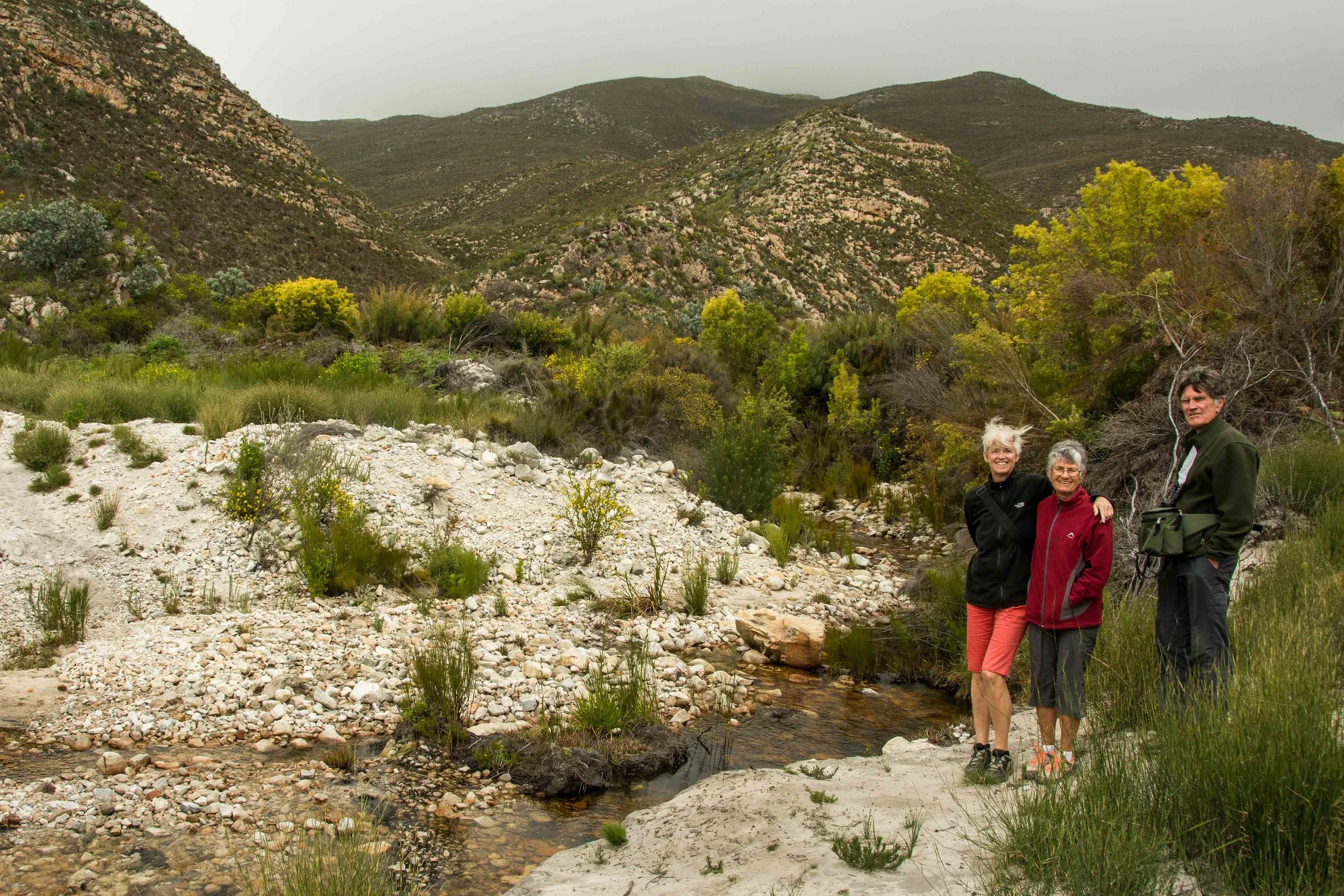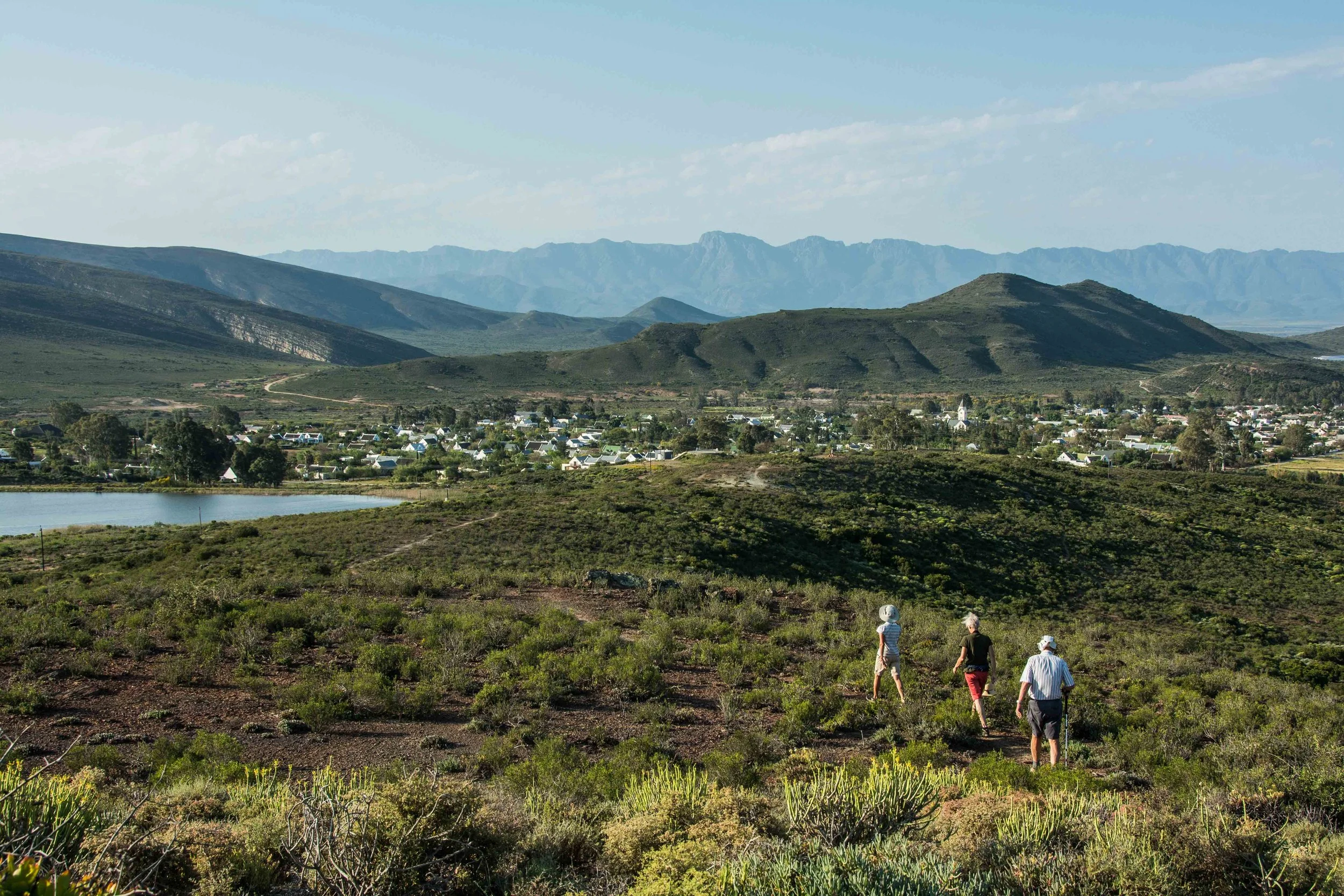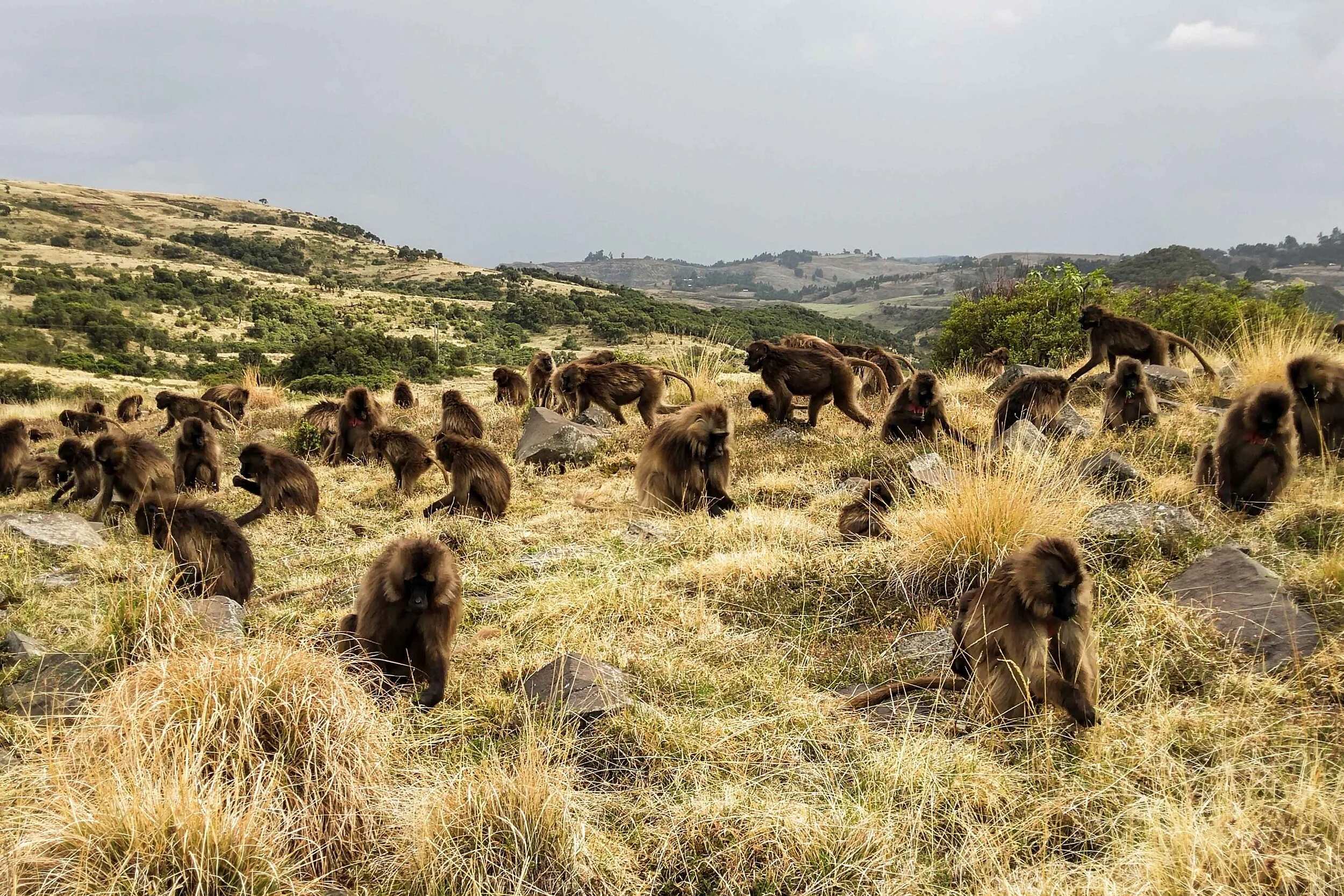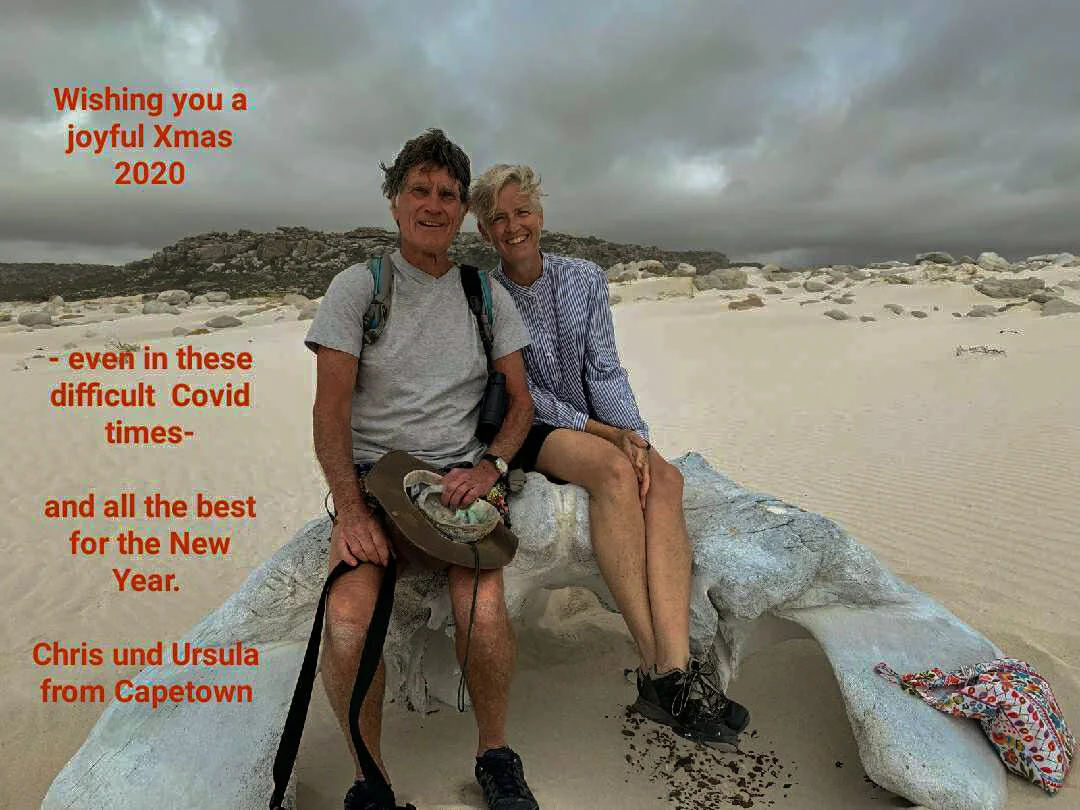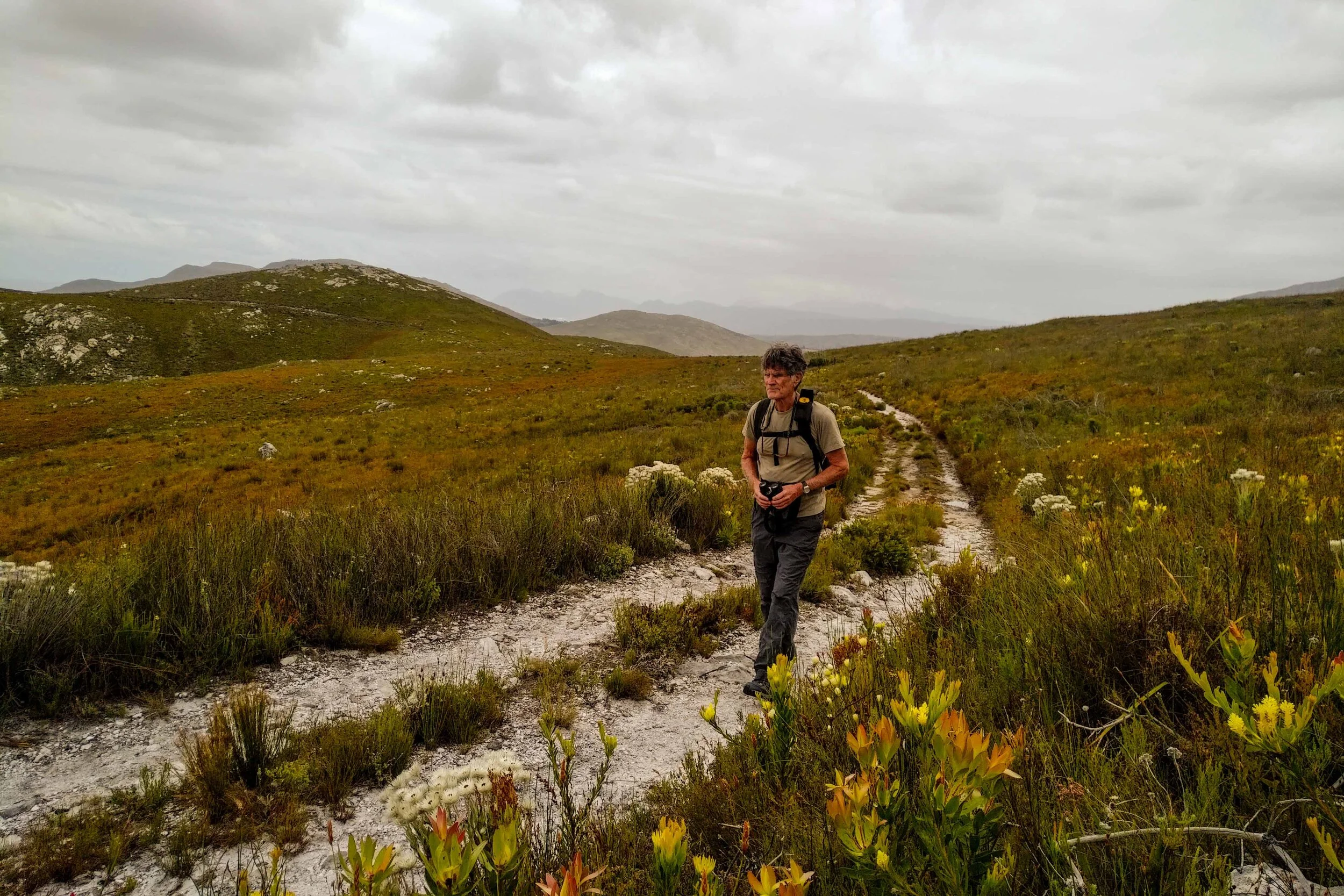After MacGregor and our visit to Barbara and Martin we flew to Durban. The flight from Cape Town was uneventful and we arrived at Durban airport in the early evening. Davine had arranged for us to be met and brought to the house and soon we were being welcomed by Bridie, and Francie and Davine. Francie had acquired an enthusiastic puppy, Bridie who was enormously excited to meet us and took a particular affection to Ursula.
It was great to meet up with Francie again. We had not seen each other for several years, and then only briefly, and evening was spent catching up, lubricated by wine and whisky. The house is lovely and opens up on a large swimming pool at the back where I was happy sitting there, watching the birds and other wildlife.
We had arranged with Francie to take an overnight trip to Cape Vidal where Francie had booked a cabin for the night.
We left Durban early Thursday morning, so avoiding the rush-hour traffic, and were in Cape Vidal by midday. Cape Vidal is in the iSimangaliso Wetland Park and is part of the Lake St. Lucia complex. We were greeted by a family of bushbuck, and also vervet monkeys, one of which tried to attack Ursula to get at the food-box she was carrying. It gave Ursula quite a scare.
1. A bushbuck family quite unperturbed by our prescence
A short walk from the cabin and we were on the beach which seems to stretch for miles with hardly a soul on it. We had hoped to do a bit of snorkelling but the sea was a bit rough with a strong onshore wind, so we gave it a miss. Ursula did manage a dip in the shallow water behind the reef.
2. Francie and Ursula on the beach, deciding whether to swim or not.
Lions were introduced into the park a few years back, and walking without a ranger is not recommended. Unfortunately, we did not see any lion or elephant. However, driving about we saw a number of different mammal species, but on the whole, we were all birding people.
3. Behind the coastal dunes lies the plain, dotted with many pools and small lakes.
Buffalo, waterbuck, zebra and kudu were especially common particularly on those areas which had been burnt earlier in the year, encouraging the growth of new grass. Being a wetland park, there was lots of water and many hippos, as well we are told, many crocodiles. We did not attempt to verify this last, although we saw several, at a distance.
4. A waterbuck with a great set of horns. Waterbuck we probably the most common of the antelope we saw.
As soon as we saw zebra we were reminded of Dasha’s infatuation with them on the family visit to Zambia.
5. Zebra enjoying the fresh grass regenerating after a controlled burn.
But the mammal highlight of the trip was a family of striped mongoose foraging along the side of the road in the early morning.
6. Two of the striped mongoose family
We also saw some lovely birds, including a secretarybird, a korhaan and a bustard, but because of the restrictions in Ethiopia I did not take a long lens with me, so no photos there.
And then back to Durban and a renewed welcome from Bridie. The house has a large swimming pool and we both had swims, Bridie being particularly excited at the sight of Ursula swimming up and down the pool.
7. Bridie demonstrating her undying affection to Ursula.
And then there are the Vervet monkeys mentioned earlier. Although this is central Durban, a troop of monkeys live in a nearby park. Naturally they do what monkeys do – search for fruit wherever they find it, and in towns, that means gardens and kitchens.
8. A vervet monkey making off with an orange stolen from the house next door.
Returning to Durban, we went on a guided tour of the Warwick Street Market on Saturday morning. This was a fascinating tour, guided by 2 members of an NGO, Isiye, Richard and Patrick.
In the past the informal traders, well, trade informally on the pavements around Warwick Street. It was an area with many problems, poor design, crime, poor hygiene, waste removal and congestion amongst others. Starting in the 1990s traders began forming organisations to protect their interests, the Self Employed Women’s Union – SEWU, and the Informal Traders Management Board – ITMB. Working with the traders and the various city departments involved, a development plan was instituted that met the needs of all parties involved.
9. A 2 metre high mosaic mural near the Isiye office.
Murals were painted indicating the importance of street trading to Durban
10. Murals onthe flyover over the market.
The traders organised themselves into something, I suppose, resembling guilds, people selling fresh produce, traditional medicine, cooked food, clothing, bead work makers, shoe repairers, barrow men moving goods for the traders, and many more.
11. The herbal market. On the left are the white clay balls sold for traditional ceremonies, and on the right different herbs for herbal remedies.
One of the more interesting, sociologically, activities is the cooking of bovine heads. Traditionally cows’ heads were cooked by and eaten by men. These were cooked on the pavement, but now a covered area for the cooking has been built, giving protection from the weather and improving the food hygiene. The cooks now are women, a break with tradition, but only men sit down to eat there. Women can buy takeaways, but not eat there.
12. The cowshead cooks at work.
Crime has dropped substantially and the market is largely self-policing; child-care facilities have been provided, toilet facilities have been built and in general the whole area has been developed. There is far too much for me to cover in this blog, this is only a taster, so to speak.
13. The covered morning vegetable market where the street traders buy the produce they sell from their stalls.
It was a really fascinating tour of the market and we must thank Francie for suggesting it and to Richard and Patrick for the enthusiastic tour they gave us. We wish them every success in the future.
Sunday was to be our last day in Durban and Francie and Davin took us to an organic farm where the farmer has, on the first Sunday in the month, a lunch for about 25 guests. But that description doesn’t do justice to the magnificent menu. I did not take any photos of the meal, but I give you one of the menu, and leave the rest to your imagination.
14. The menu, eat your jealous heart out. You get the lot, no need for decision making!
It is a proud claim that 95% of the food comes from within 100 metres of the house, both meat and vegetables.
15. A future Lunch-in-waiting
A wonderful end to a wonderful holiday. Thank you, Francie, for suggesting it and making the booking. I can still taste some of those dishes, but it would be invidious to pick out any one of them. And the visiting guest chef had previously been the chef at the Temenos in MacGregor!
On the Monday morning we flew out of Durban on the first leg of our return to Addis Ababa. We arrived in Addis to find out from our taxi driver, that the airport had been closed for the whole day and had only reopened 20 minutes before our ‘plane landed. The cause of the disruption was the official inauguration of Prime Minister Abiy Ahmed after winning the election in June.
Best wishes to all and thanks once again to all who made our short holiday so memorable.











